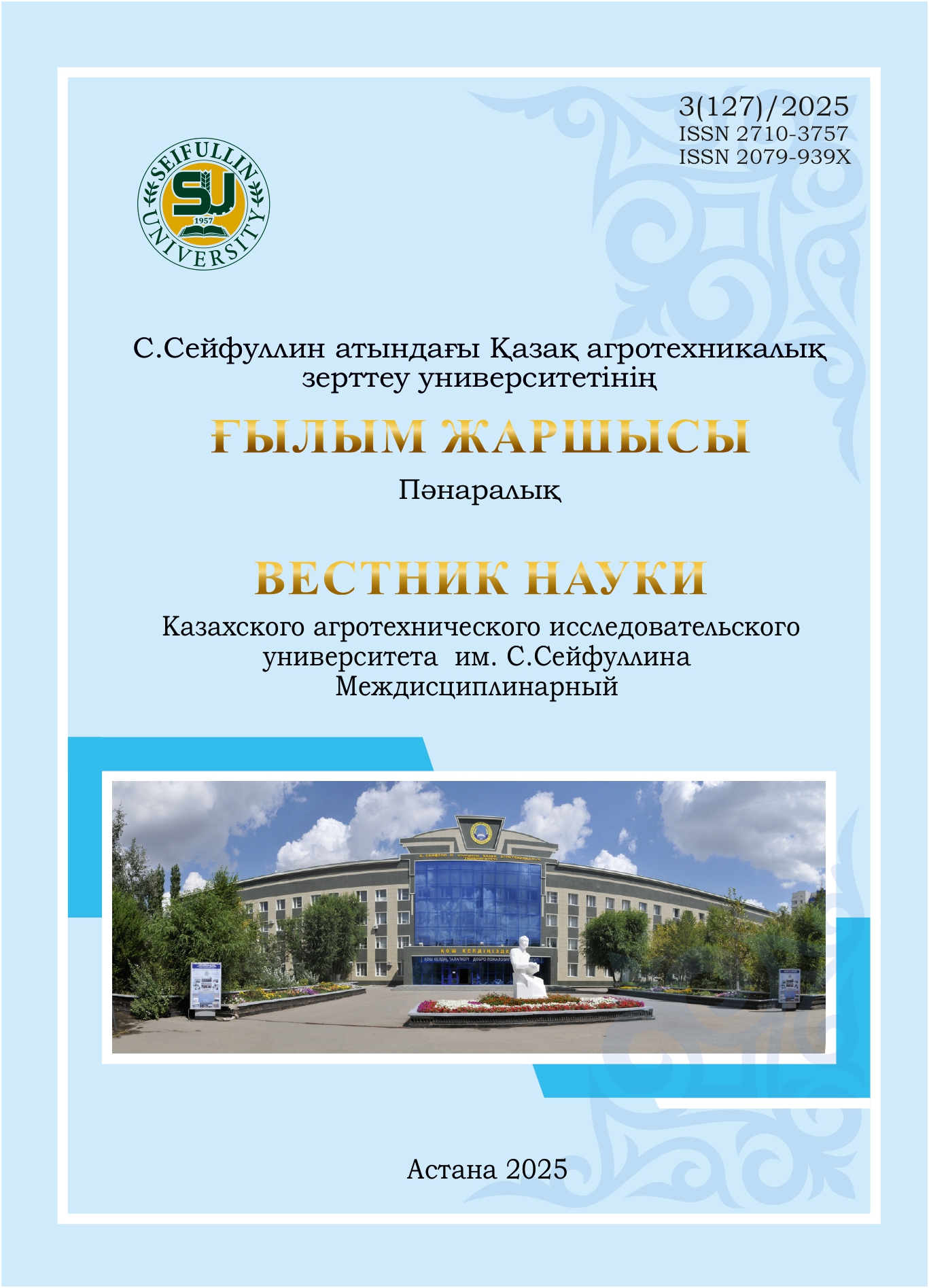Analysis and development trends of the pig industry in Kazakhstan
DOI:
https://doi.org/10.51452/kazatu.2025.3(127).2001Keywords:
breeding pigs; breed; farming; pig; pig productivity; selection.Abstract
Background and Aim. The problem of increasing the efficiency of pig production is one of the most important for agriculture in the Republic of Kazakhstan. Increasing efficiency is dictated by the need to increase the volume of domestic meat production to meet the population's needs for this food product and achieve food security parameters. The aim of this study was to analyze the development of the pig breeding industry by studying the state of the breeding stock of pigs, their economically useful qualities, as well as comparing these indicators of the leading countries of the world.
Materials and Methods. Throughout the work, generally accepted zootechnical research methods were used. The state of breeding in pig farms by region, the genealogical structure of herds, and productivity records were analyzed based on the information and analytical system's database, statistical data, and the materials of zootechnical and breeding records of farms.
Results. The pork share in world meat production is 38-40%, in Russia 30-32%, and in Kazakhstan – 14-15%. The volume of pork production in the world per year is more than 108 thousand tons. A significant pig population falls on agricultural enterprises – 55.3%, households - 33.1%, and the share of IE and PF reaches 11.6%. The breeding stock of pigs is represented by the following breeds - large white (Yorkshire), Landrace, Duroc, Aksai black-and-white, Edelschwein, and Pietrain. The most common breed is significant white – more than 34%. The total number of animals surveyed was 26.062 heads.
Conclusion. Based on the research results, a reduction in the pig population over many years by 40-50%, a shortage of breeding material, and a lag in all indicators of productivity of the domestic pig population from the leading countries of the world were established.

